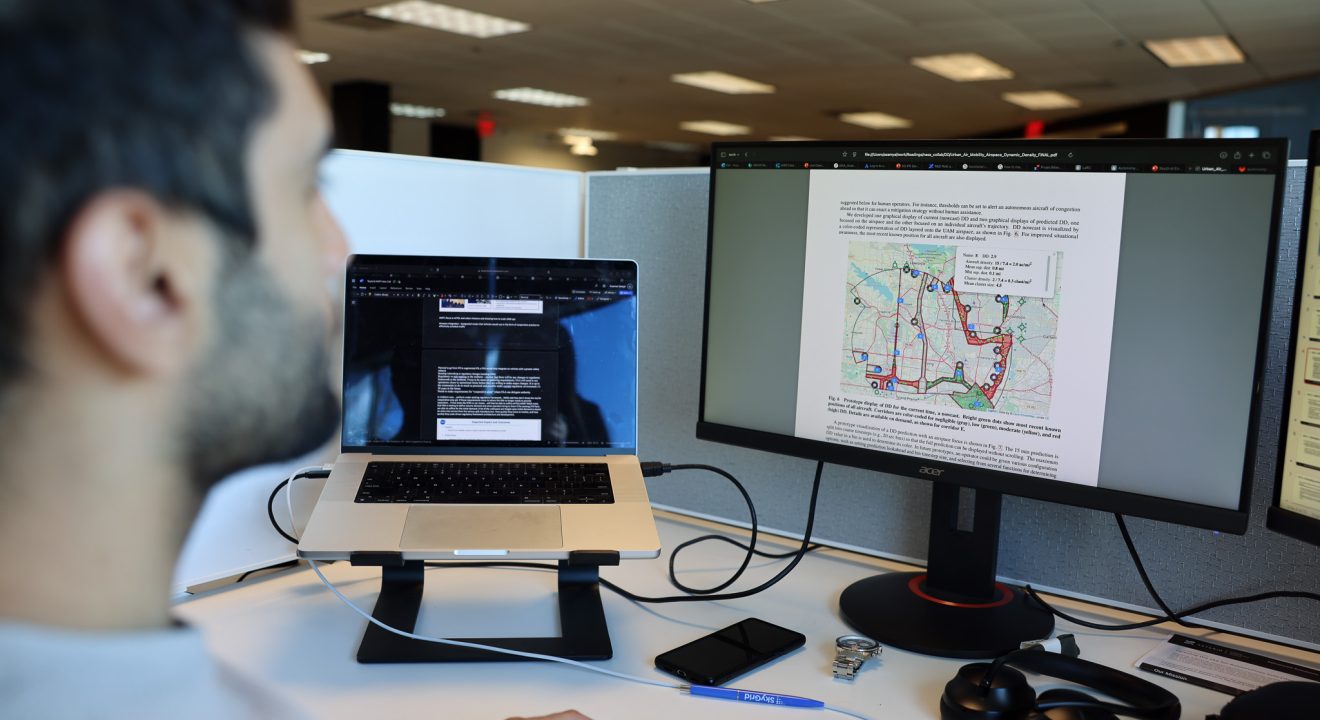Advanced Air Mobility (AAM) introduces a new sector of aviation: passenger-carrying autonomous aircraft operating in urban and regional environments. Think of the autonomous driving cars that have been developed in the last couple years, but for the sky instead of the roads.
In this context, autonomy refers to a system capable of operating independently, utilizing advanced algorithms to assist in making real-time decisions in a complex environment while enhancing efficiency and safety. Autonomy serves as a catalyst for AAM; by leveraging existing aeronautical data alongside new high-integrity data, various aspects of flight can be automated.
Autonomous systems don’t imply the complete absence of human involvement. Instead, repetitive tasks are delegated to these systems, which can process information and make decisions without human intervention, reducing the need for constant human interaction. Using algorithms—pieces of logic written in code that are used to process data and provide an output based on a desired outcome—facilitates this; running data through an algorithm can help operators discern mission-relevant information, provide awareness to decision makers, and suggest decision outputs based on safety and efficiency.
As a Third-Party Service Provider (TSP), integrating autonomy in AAM will improve routine strategic and tactical activities such as flight planning, scheduling, and route optimization, as well as assist in responsive measures like hazard avoidance and alterations to the flight directory. With an expected increase in air traffic and a shortage of air traffic controllers, this allows flight operators and Air Traffic Control (ATC) to focus on overall oversight and strategic initiatives.
Incorporating Autonomous Systems
Autonomy makes advanced operations predictable, safe, and efficient. Incorporating autonomy into aviation requires a higher level of rigor and safety than in the automotive industry.
At SkyGrid, many different algorithms play a pivotal role in the evolution of autonomous systems. They are instrumental in data aggregation, optimization, and data-driven decision making. The success of these systems depends on several factors: the quality of the data sourced from suppliers, the capacity to process large quantities of data reliably and quickly, and the safe application of reinforcement learning and other machine learning techniques.
Autonomous functions require substantial information regarding their environment, and aircraft can’t always have all this information onboard while operating. TSPs provide and process information, provide support for a desired decision or action, and then monitor the output of that decision or action. This makes TSPs the glue of autonomous operations, enabling flights to function in complex environments with informed decision making and situational awareness.
In AAM, autonomy will be utilized through both onboard and ground-based systems. Onboard autonomous systems are installed on aircraft, such as sensors, which acquire and process data and algorithms. This generates a desired result or command that is sent to other aircraft systems, for example, a decision related to changes in the aircraft trajectory.
Ground-based systems operate similarly; however, data is collected from ground-based sources like radars and weather sensors and then consolidated. These sensors and systems either cannot be installed, are not practical to install, or are not as powerful when installed on an aircraft. Instead, an algorithm processes the data to make decisions, which are presented clearly to flight operators, who can then share that information with aircraft and other ecosystem participants. This is the approach we are adopting at SkyGrid.
SkyGrid’s Approach to Autonomy
Our goal is to create a high-assurance platform that leverages autonomy and provides a common operating picture for AAM flight operators. Our system will provide enhanced situational awareness, decision support, and ultimately offer automated decision-making capabilities, leading to autonomous operations that are safe, efficient, and scalable. We anticipate that our ground-based system will integrate with Air Navigation Service Providers (ANSPs) and unmanned aircraft system (UAS) operators under current regulatory framework, and then eventually with Air Traffic Management (ATM) systems.
Regarding regulation, there is an evolving landscape as regulatory bodies catch up with technological capabilities to ensure safety and efficacy in autonomous operations. We will continue to collaborate with regulators and adhere to any new standards developed. To address cybersecurity and safety concerns, we will validate system requirements, classify safety hazards, and create requirements based on those hazards, use high-integrity data, and implement software and hardware that complies with safety protocols. As the industry evolves and the development of Automated Flight Rules (AFR) progresses, we will evaluate industry and customer needs to ensure our autonomous technologies fit.
Reshaping Transportation
Incorporating autonomy will make flight more accessible, flexible, and equitable. Operating costs will decrease, leading to cheaper ticket prices. New forms of air travel will also become available, such as air transit in urban environments on a larger scale and utilizing new airspaces like those above downtown areas. This evolution will take time, but safer and more predictable operations will ultimately instill a greater level of trust in aviation.
